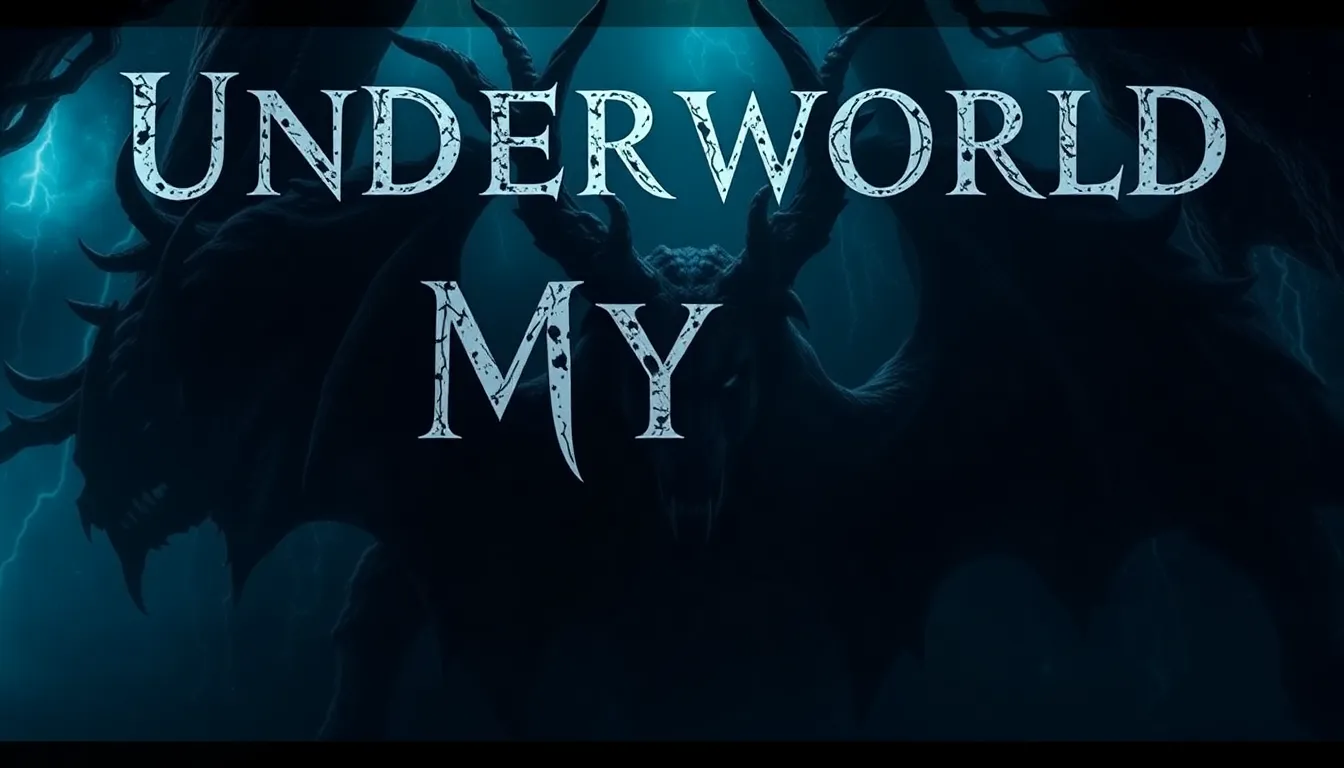Underworld Myths: The Dark Tales That Fascinate and Terrify
I. Introduction to Underworld Myths
Underworld myths, often steeped in darkness and mystery, represent the stories and beliefs surrounding the afterlife and realms beneath our world. These narratives serve to explain what happens to the soul after death and often reflect the values and fears of the cultures that created them.
The significance of underworld myths spans various civilizations, acting as a bridge between the living and the dead, while providing moral guidance and existential explanations. This article aims to explore the allure and terror of these tales, examining their historical contexts, archetypes, and cultural significance.
II. Historical Context of Underworld Myths
Understanding the origins of underworld concepts requires a look at ancient civilizations that laid the groundwork for how we perceive the afterlife today.
A. Origins of Underworld Concepts in Ancient Civilizations
- Mesopotamian Beliefs: The Sumerians and Akkadians believed in a grim underworld known as Kur, a dark and dreary realm where the dead resided, ruled by the goddess Ereshkigal.
- Egyptian Afterlife Mythology: The Egyptians had a rich tapestry of beliefs regarding the afterlife, including the judgment of the soul by Osiris and the journey through the Duat, a dangerous underworld filled with trials.
B. Evolution of Underworld Myths Through the Ages
As societies evolved, so too did their concepts of the underworld. From ancient texts to modern interpretations, these myths have transformed, reflecting changing values and beliefs about life and death.
C. Influence of Religion and Spirituality on Underworld Narratives
Religious doctrines have profoundly shaped underworld myths, introducing ideas of judgment, punishment, and redemption, influencing how different cultures perceive the afterlife.
III. The Archetype of the Underworld
Across various cultures, certain archetypal characteristics of underworlds emerge, revealing common themes and symbols.
A. Common Characteristics of Underworlds Across Cultures
- Darkness and desolation
- Guardians or guides that help souls navigate the afterlife
- Trials that souls must undergo to reach a final destination
B. Symbolism of Darkness, Death, and Rebirth
The darkness of the underworld often symbolizes the unknown, while death serves as a transition rather than an end. Many myths incorporate rebirth or resurrection, indicating a cyclical view of life and death.
C. The Role of Guides and Guardians in Underworld Myths
Guides, such as Charon in Greek mythology or Anubis in Egyptian lore, serve crucial roles, helping souls cross into the afterlife and ensuring they reach their appropriate destinations.
IV. Notable Underworld Myths from Around the World
Various cultures have their unique narratives about the underworld, each rich with symbolism and moral lessons.
A. Greek Mythology: Hades and the River Styx
In Greek mythology, Hades is the realm of the dead, accessed via the River Styx, which souls must cross to enter the afterlife. Charon, the ferryman, plays a vital role in this journey.
B. Norse Mythology: Hel and the Realm of the Dead
Hel, ruled by the goddess of the same name, is the Norse underworld where those who did not die honorably reside. The realm contrasts sharply with Valhalla, where warriors are rewarded.
C. Aztec Beliefs: Mictlan and the Afterlife Journey
The Aztecs believed in Mictlan, a place where souls journey for four years, facing challenges and trials before reaching their final resting place.
D. Hindu Mythology: Naraka and the Cycle of Reincarnation
Naraka represents a purgatorial realm in Hindu belief where souls may experience torment based on their earthly deeds before being reborn into a new life.
V. Underworld Myths in Literature and Art
Underworld themes have been a significant source of inspiration in literature and art throughout history.
A. Interpretation of Underworld Themes in Classic Literature
- Dante’s “Inferno”: A detailed, allegorical journey through the nine circles of Hell, illustrating divine justice.
- Virgil’s “Aeneid”: Aeneas’s descent into the underworld provides insights into Roman beliefs about death and the afterlife.
B. Artistic Representations of Underworlds
From paintings to sculptures, artists have depicted the underworld in various styles, exploring themes of death, despair, and the afterlife.
C. Modern Adaptations in Books, Movies, and Video Games
Modern storytelling continues to draw from underworld myths, with adaptations that resonate with contemporary audiences, reflecting our ongoing fascination with the themes of darkness and redemption.
VI. Psychological Perspectives on Underworld Myths
Underworld myths hold a mirror to human psychology, revealing our deepest fears and fascinations.
A. The Role of Fear and Fascination in Human Psychology
Humans are drawn to tales of the unknown, and underworld myths tap into primal fears surrounding death and what lies beyond.
B. Underworld Myths as Reflections of Societal Fears
These myths often reflect societal anxieties, offering explanations for the mysteries of life and death while providing comfort or caution.
C. The Therapeutic Implications of Confronting Dark Tales
Engaging with underworld myths can serve as a form of catharsis, allowing individuals to confront their fears and explore the darker aspects of the human experience.
VII. The Cultural Significance of Underworld Myths
Underworld myths often carry moral lessons and cautionary tales, influencing cultural rituals and beliefs.
A. Underworld Myths as Moral Lessons and Cautionary Tales
Many myths serve to teach societal values, warning against hubris or immoral behavior, and emphasizing the importance of living a virtuous life.
B. Rituals and Traditions Related to Underworld Beliefs
Various cultures have rituals that honor the dead and acknowledge the existence of the afterlife, connecting the living with the spiritual realm.
C. Contemporary Relevance of Underworld Myths in Modern Society
In today’s world, underworld myths continue to resonate, shaping our understanding of mortality and the human condition.
VIII. Global Variations and Unique Interpretations
While underworld myths share common themes, they also reflect unique cultural interpretations of the afterlife.
A. Comparison of Underworlds in Different Cultures
Each culture’s underworld reveals much about its values, beliefs, and societal structure, showcasing both similarities and differences.
B. Unique Interpretations of the Afterlife and Moral Judgment
Different cultures approach the concepts of judgment, punishment, and reward in their underworlds, offering diverse perspectives on morality.
C. Syncretism and the Blending of Myths Across Cultures
The merging of myths through cultural exchange has led to rich, hybrid narratives that reflect a shared human experience concerning the afterlife.
IX. Modern Fascination with Underworld Myths
The resurgence of interest in dark folklore and mythology illustrates humanity’s enduring curiosity about death and the mysteries of the afterlife, as well as our need to confront our fears.
In conclusion, underworld myths serve as profound narratives that not only reflect cultural values but also explore the complexities of human existence. From ancient civilizations to contemporary interpretations, these dark tales continue to fascinate and terrify, inviting us to ponder the eternal questions of life, death, and what lies beyond.


